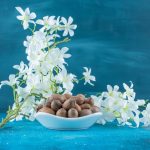
In recent years, medicinal mushroom products have become quite popular, offering everything from mushroom coffee to mushroom chocolate. One effective way to enjoy the health perks of mushrooms is through dual-extraction mushroom tinctures.
These tinctures are a simple and convenient way to incorporate functional mushrooms into your daily diet. Just add a dropperful to your smoothies, coffee, or other foods. Since some medicinal mushrooms are tough to digest in their raw powder form, extraction helps improve their absorption in the body.
Typically, tinctures use alcohol to extract nutrients and flavors from herbs, similar to how vanilla extract is made. While glycerin or vinegar can also be used for extraction, they aren’t technically classified as tinctures. Another method involves using water, much like making peppermint tea or elderberry syrup. However, water-based extracts don’t last as long as alcohol-based ones, and each extract pulls out different nutrients.
A dual extraction combines both water and alcohol methods on the same plant. Although you would generally use one method, mushrooms benefit from dual extraction because water extracts beta-glucans and polysaccharides, while alcohol extracts triterpenes.
Opinions vary on the best way to make a mushroom tincture, and the evidence is more about personal preference rather than science-backed methods. Based on my research, here’s a method I’ve adopted: Start by placing finely chopped or powdered dry mushrooms in a clean jar. Larger pieces don’t extract as well, and fresh mushrooms are prone to spoilage. For this, mushroom powder or dried mushrooms works well.
Let the mushrooms soak in alcohol for 2-4 weeks, then strain the mixture and keep the alcohol in a clean jar, reserving the mushrooms. You can reuse these mushrooms for water extraction or use fresh ones. Next, simmer the mushrooms in water, strain them out, and combine with the alcohol extract.
You have plenty of options; you can use a single type of mushroom or create a blend of several. Shiitake and maitake mushrooms taste great in soups and stir-fries, while other mushrooms are more bitter and are better suited for tinctures or mixtures. Many of these mushrooms also have nootropic properties, benefitting brain health.
There is some debate about using the fruiting body (the above-ground part) versus the mycelium (the underground part) of the mushroom. Although mycelium has some benefits, it is often less potent.
Here are a few options along with a brief overview of their health benefits! If DIY mushroom tinctures aren’t your thing, you can find high-quality ones from various sources. I personally prefer Four Sigmatic for mushroom supplements, whether in pill or powder form. They also offer great coffee and cocoa options!
Do you incorporate medicinal mushrooms into your daily routine? What are your favorite ways to use them?

